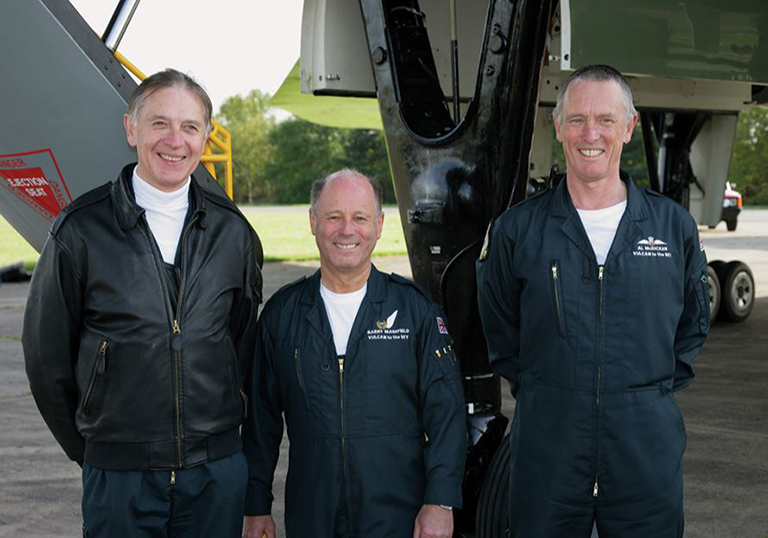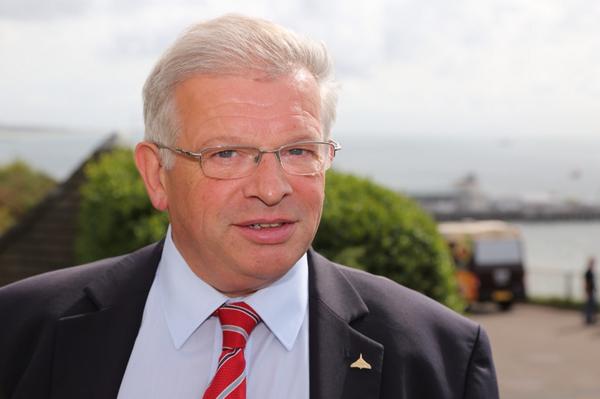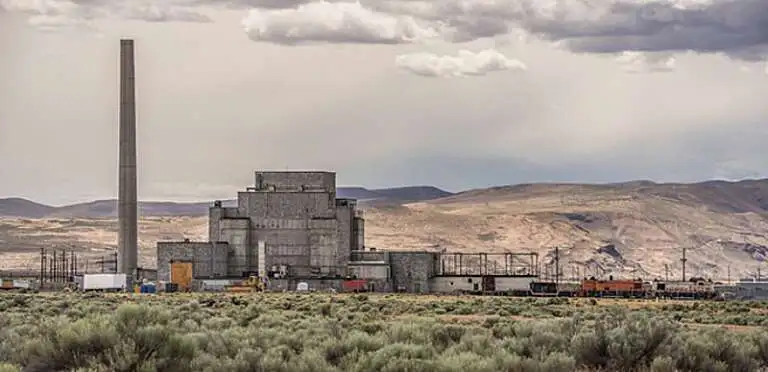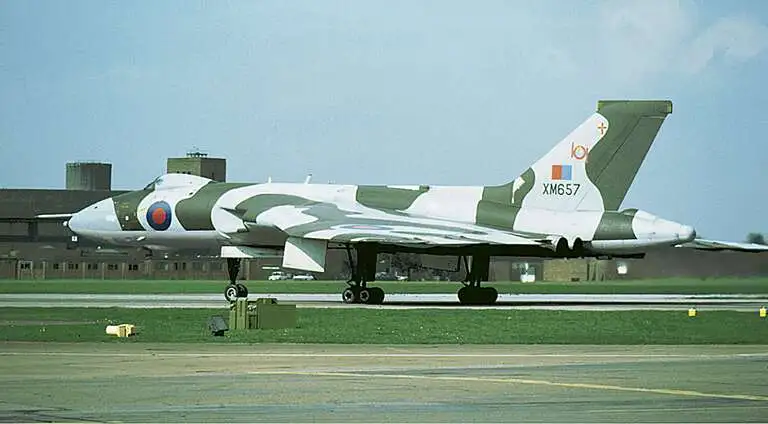
Ramblings from the AEO’s Panel – Part 1
Barry Masefield was the Air Electronics Officer (AEO) for Vulcan XH558 and had flown in this iconic aircraft for over 30 years, also being a key

A retrospective by Robert Pleming
In an article, which was originally published in the Royal Academy of Engineering’s magazine Ingenia in March 2012, Dr Robert Pleming writes about the Vulcan’s historical importance and the significant role the aircraft played during the Cold War. He also recalls the challenges of restoring Vulcan XH558 and the benefits of maintaining an aeronautical icon.
As an air cadet, Robert won a Flying Scholarship, which sparked his passion for aircraft. Robert Pleming FRAeS gained a doctorate in Nuclear Physics at Oxford University in 1977. After university he began a career in IT. He successfully moved through systems engineering and management roles with IBM, eventually becoming UK Technical Director for Cisco Systems. In 2000, with Vulcan return-to-flight feasibility established, Robert assumed the full-time (unpaid) role in charge of the Vulcan project. The Cisco job was history, along with a thousand pounds in savings.
In the early part of 2004, before the Heritage Lottery Fund announced their grant funding, Robert said “This is my own personal Everest,” squaring his shoulders for a final assault on the peak. “I’m either Mallory or Hillary, I’m just not sure which yet.”
Edmund Hillary reached the summit of Everest in May 1953, survived to write a book about it, was made a baron, and passed away peacefully at age 88. George Mallory died on the mountain during his summit attempt in 1924.
Robert was Hillary! He was instrumental in developing the heritage project that saved the Vulcan bomber. XH558 made her first flight after restoration, on Thursday 18 October 2007…
The Return of the Vulcan
Just after the end of the Second World War in Europe, Churchill, Stalin and Truman met at Potsdam to decide on Europe’s post-war structure. During the meeting, Truman was informed of the successful test of the atomic bomb in the New Mexico desert; Stalin’s spies ensured he knew too. By the end of August, the world had changed yet again: Truman had authorised the use of atomic bombs on Japan; Stalin had become fearful of America’s intentions; Churchill had lost the British General Election to Clement Atlee and on 28 August 1945, Atlee had presented a paper to his Cabinet proposing that, to retain control of its foreign policy, Britain should build its own atomic bomb. The Avro Vulcan, and her sister four-engined V-bombers, the Vickers Valiant and the Handley Page Victor, were developed to carry the British bomb to the Soviet bloc, in retaliation for a nuclear attack on the West. The concept of deterrence had been born.
This is the story of the restoration to flight of Avro Vulcan XH558, the last airworthy example of the RAF’s strategic deterrent “V-Force”.
The Aircraft
The Avro Vulcan was designed in 1946-7 by a team led by Roy Chadwick, Chief Designer of A.V.Roe & Co Ltd of Manchester (who had previously designed the famous Avro Lancaster) to meet the new requirement for a long-range bomber to carry the British atomic bomb. This innovative tail-less delta design first flew in August 1952; the production versions embodied such innovations as first use of twin-spool axial turbojets, an AC power system, cabin pressurisation, electronic countermeasures, electro-hydraulic powered flying control units and anti-lock brakes. A total of 134 Vulcans were built; the capabilities of the design allowed upgrades from a free-fall bomber to carry the Blue Steel nuclear cruise missile, and maritime radar reconnaissance, air-to-air refuelling tanker and engine test variants. XH558 is a Vulcan B.Mk2 bomber, and first flew into RAF service at RAF Waddington on 1st July 1960. XH558 is now the oldest complete Vulcan, and also the last one to fly.
From 1957, the Avro Vulcan was the major delivery vehicle for the British strategic deterrent, until superseded by Polaris in 1969. Afterwards in service in a tactical role, the swansong of the Vulcan was to be during the Falklands Conflict in 1982, when a lone Vulcan, refuelled several times by a fleet of Victor tankers, put the enemy-held Port Stanley airfield out of action to fighters. The last Vulcan squadrons were disbanded in 1984, but Avro Vulcan XH558 flew on in the RAF Vulcan Display Flight until September 1992. As the result of an MoD cost-cutting decision, the aircraft was sold to C Walton Ltd and flown in to Bruntingthorpe Airfield, near Lutterworth, Leicestershire, on 23rd March 1993.
Feasibility Study & Funding
Having followed the fortunes of XH558 during her final years in the RAF, I looked more deeply into the history of the Vulcan, and was amazed by the leap in aviation technology in the immediate post-WW2 years that the aircraft represents. Conscious of the massive public support for XH558, and aware that the aircraft was retired before her time, in early 1997 I resolved to explore the feasibility of returning Vulcan XH558 to flight. Besides, a friend informed me I’d never make it happen!
The initial challenge was to discover whether the civil aviation regulatory regime would allow an ex-military aircraft as heavy, powerful and complex as the Vulcan to fly. The key to a positive response turned out to be to gain the support of BAE Systems, who had inherited design responsibility from A.V. Roe. With the aid of a project plan built by a small, expert team that I had formed to investigate the feasibility of a return to flight, and the enthusiasm of some senior BAE Systems personnel, this support was granted in May 1999 – theoretically, the Vulcan could fly again.
In September 1999, a three-day Project Definition Workshop was held, with design representatives from BAE Systems and our retained Engineering Authority, Marshall of Cambridge Aerospace Ltd. The outcome was the specification for a detailed technical survey to determine whether there were any insurmountable technical issues with a return to flight – not the least of which was to find a way of extending the airframe fatigue life – and the scope of the restoration work needed to return XH558 to airworthiness. The latter turned out to be a “Major Service” – the most in-depth Vulcan servicing –with some additional inspections because of her age and time since last flight.
By Spring 2000, the aircraft had undergone the technical survey, which verified that its airframe and systems could be restored to full airworthiness at reasonable cost. In addition, the availability of an almost complete library of original documentation and design data, and several hundred tons of spares – including, vitally, eight zero-time Rolls-Royce Olympus 202 turbojet engines – meant that in practical terms the restoration to flight was now feasible.
Several hundred Original Equipment Manufacturers who made the thousands of individual Vulcan systems and components were painstakingly sought out and contacted – many had been taken over – and each one agreed to assess and service their components as required. This major commitment meant that, with the appropriate Civil Aviation Authority (CAA) regulatory approvals and the technical support by BAE Systems, work could start on the return to flight.
It was already clear from project costings that funding of some £3.5million would be required. This was a mammoth task, one not easily undertaken by engineers, but we had gained the support of Mrs Felicity Irwin, a seasoned fund-raiser. Many supporters from the public came forward, and promises made, but with millions to be raised and the clock ticking, it was apparent that a major financial backer would be needed. The Heritage Lottery Fund (HLF) was the obvious funding body for such a valuable British heritage asset: a grant application was made in March 2002, but sadly was rejected in late November of that year. Following a vigorous reaction from the public to this decision, the HLF provided specific and detailed feedback on how our application could be enhanced to emphasise the long-term public benefits.
This revised application was submitted in May 2003, including additional public educational benefits. Despite openly having a policy not to support projects whose aim is restoration of aircraft to flight, in December 2003 the HLF Trustees announced to my team and our supporters that they had made an “exceptional decision” to earmark a grant of £2.5million for the project.
On June 23rd 2004 the Heritage Lottery Fund confirmed that they would award £2,734,000 to the Vulcan to the Sky project, with the rest to be raised by ourselves. The scope of the grant included not only the restoration of XH558 to flight, but the provision of public access to her on the ground, and the setup of educational activities to tell the story of the Cold War and to provide lessons for schoolchildren in technology, engineering and maths based the aircraft and her operation. Over the coming months details were thrashed out and contracts signed, and in February 2005 the HLF gave the go-ahead for the purchase of the aircraft from C Walton Ltd by the Vulcan to the Sky Trust, a Registered Charity, and the commencement of restoration. The first task was the recruitment and training of the technical team needed to work on the aircraft – a total of some 18 people, spread across the aircraft trade skills of airframe, propulsion, electrics and avionics, under the leadership of Engineering Director Andrew Edmondson. A detailed 13-week Vulcan technical training course was devised and delivered to the technicians, turning them from trade generalists into Vulcan specialists. Finally, in August 2005, work started on the restoration.
The Restoration Project
Initial project planning estimated that the restoration project would last for 14 months and consume about 50,000 man-hours. Because of their experience in one-off aircraft projects and their CAA accreditations, engineering control of the project was passed to Marshall of Cambridge Aerospace Ltd. The restoration project was to have four phases: a detailed “Inspection” of the aircraft for faults, followed by “Rectification” of those faults. During this period, hundreds of systems components were overhauled and returned in time for the “Recovery” of the aircraft to the correct configuration for flight. “Test” followed, first on the ground and then, with ticks in all the boxes, the aircraft was released to its aircrew for its first test flight.
Inspection and Rectification
In preparation for the inspection, virtually everything that could be removed from the aircraft was removed, requiring a major logistical exercise to track each one of these valuable components. Inspection of the aircraft’s structure was very detailed; every aspect of the structure was inspected visually, and various non-destructive techniques were employed to discover any underlying problems, including X-ray (over 450 X-ray pictures were taken), ultrasound, eddy current and borescope. Numerous minor, repairable, faults were found, including skin and rib cracks, missing rivets and corrosion, but none so significant as to generate major concern.
A structural fatigue life extension modification on the rear spar of each wing was embodied; this involved removing the main bolts that secure the bottom of the wing spar to the centre section of the aircraft and adding a steel reinforcing plate, a risky task as, if a mistake had been made, the aircraft would have been grounded.
The complete hydraulic, pneumatic and oxygen systems were removed for inspection and overhaul. All flexible pipes and seals were replaced, a significant and expensive effort on its own. The Vulcan has many critical systems powered by electricity, including the flying controls, so the integrity of the aircraft’s wiring and electrical supplies is vital: an early decision – the aircraft would be rewired, this in itself a major exercise.
Twelve months after work had started on the project, it was clear that tasks were taking much longer than initially estimated, and as the result, manpower costs were increasing rapidly. Not only were tasks taking longer, because of the learning curve associated with work on this unique aircraft, but some problems were more difficult than anticipated. For instance, significant corrosion was found on magnesium alloy skins and structure of the flying control surfaces, requiring rebuild of these units. Another example: it was known that some 47 of the aircraft’s original systems would not be needed in our operation of XH558 under civilian regulations, ranging from the analogue Navigation and Bombing System to the crew’s ration heaters. Late in the day, it was decided that each systems deletion would require its own safety case, needing some extensive and unplanned design analysis.
However a major media-led major campaign in August 2006 raised the £1.2million required to complete the project, including a significant donation of £500,000 from Sir Jack Hayward.
Recovery and Testing
With aircraft structural rectification nearing completion in the Spring of 2007, attention focused on refitting the aircraft’s systems. One by one the components taken off for overhaul were refitted: radome, ejection seats, canopy, landing gear, wheels and brakes, fuel tanks and pumps, the engines, each with its attached constant speed drive and 60kVA alternator, elevons and rudders, powered flying control units and motors, artificial feel units, yaw and pitch dampers, undercarriage doors and hydraulic rams, air conditioning system, cockpit instruments, the fifth engine in the airborne auxiliary power pack – the list went on and on.
With the exception of modern avionics, the restored XH558 is almost completely authentic, with only a few material substitutions being required because of the unavailability of the originals. The Safety Case for flying the aircraft is based on the in-service safety record of the Vulcan fleet; it’s therefore vital that XH558’s specification is as near as possible to the original fleet, with each deviation requiring a separate risk assessment.
With much of the recovery complete, ground testing started in early summer with the application of electrical power – initially the 24v DC vital supply, followed by the 200V 400Hz 3-phase AC and subsidiary supplies. One by one the various systems were put through documented procedures to ensure correct set up and operation. Possibly the most time-consuming and messy was the fuel system, with its 14 fuel tanks (holding about 39,000 litres of fuel in total), 29 fuel pumps and associated pipe work. On the Vulcan, fuel is used to maintain the fore-and-aft centre-of-gravity in the correct position, so it’s vital this system works correctly.
With recovery complete in August 2007, it was time to light the fires! On a pan on the airfield, one by one, the four new Rolls-Royce Olympus 202 engines were started and, on test, performed perfectly – over 25 years since they were last running.
It would be wrong to imply that there were no problems found during test – there were – but that is what testing is all about. A couple of the faults were spectacular, both of these arising from component failures in the 3000psi hydraulic system. But all of the faults were fixed, and by October, XH558 was ready to move for the first time since the start of the project under her own power. Slow and fast taxy tests followed, including deployment of the brake parachute.
Finally, after 26 months, over 100,000 man-hours and £7million spent, a restored Vulcan XH558 was ready to fly again. Thursday 18 October was a perfect day for flying, and in front of the expectant crowd of those who had made it happen, XH558 roared down the runway and leapt into the air. There were shouts, cheers and tears of joy – so much effort by so many people. I felt awed, stunned, but remember thinking “I can’t relax until she’s safely back on the ground”. After a full 30-minute flight, our test flight crew brought her back to the airfield for a perfect landing – we had done it. Safely.
The return of the Vulcan to the air prompted national media coverage, a British aviation achievement the like of which had not been seen for many years.
Challenges
Despite its size, the Vulcan is a straightforward design, the main complexity being in the original valve-based analogue electronic navigation systems. The materials used, whilst modern in their day, were latterly discovered to have unsatisfactory corrosion modes such as exfoliation and stress corrosion cracking. Fortunately for XH558, because of good stewardship, this was not too much of a problem. However supply of identical materials for repairs did pose challenges, and whilst Imperial sizes can still be found in the USA, substitution by newer materials in metric sizes was often required, needing design approval.
The major challenges in the restoration however arose during the overhaul of various critical systems such as the powered flying control units and the chassis-mounted fuel systems for the engines. The companies responsible for these units had luckily retained the original drawings and testing gear, but not necessarily the skills – several firms found themselves hiring back retirees just to work on XH558’s systems.
One major update was made, to replace the aircraft’s 1950’s military flight systems with modern equipment, not only because the original equipment was deemed unreliable and unmaintainable at reasonable cost, but also to ensure compliance with current Air Navigation Order requirements. A new “Horizontal Situation Indicator” (aka Compass) and Artificial Horizon was provided for the pilots, with additional navigational equipment such as GPS, transponder and height-encoding altimeter – each requiring new aerials to be installed.
Finally, it’s worth noting that the enthusiasm shown by the original manufacturers for the project in 2000 appears to have been overtaken by the risk-averse corporate governance of today. I conclude that the loss of system skills due to the inevitable consequences of old age, and a culture of risk avoidance, means that were I looking now to start restoring XH558 to flight, the project would in all probability not get off the ground.
Aircraft Operations
Following a series of further test flights required to iron out minor problems with the aircraft’s new avionics suite, XH558 was finally awarded her “Permit to Fly” on 3rd July 2008. Two days later, she flew her first display for an enthralled public at the RAF Waddington Airshow. Since then, XH558 has flown for over 344 flying hours in 229 sorties in front of over fifteen million people at over 200 events around the UK and Europe, and has been seen by countless more people as she has transitted around the country between home base and displays, and during the several tours she undertook towards the end of her flying life. XH558 proved to be remarkably trouble-free. To keep the aircraft in top condition, there is a rigorous servicing schedule: regular checks on the engines, landing gear and critical structure were driven by flying hour milestones. Every winter, the aircraft undergoes a thorough inspection and lubrication; critical components which have a calendar life, such as the ejection seats, fire extinguisher bottles and oxygen regulators are overhauled or replaced. This is not cheap; to keep this “one aircraft airline” going costs around £2million per annum, for 40-50 flying hours.
Retirement
Unlike modern commercial airliners, which are built to a damage-tolerant design policy, the Vulcan was designed to a “safe life” principle: XH558 has a limit to her fatigue life, beyond which she cannot fly. The life left in the available Olympus engines was also approaching its limit. XH558 retired to her home at Doncaster Sheffield Airport after her last flight on 28th October 2015.
The success of this project was in my view due to three things: the determination and perseverance of the small team that made it happen; the enormous support coming from the public’s desire to see the Vulcan fly again; and the assistance from many, many firms in the British aviation industry. Sincere thanks must go to all these constituencies from everyone who has experienced the feeling of pride upon seeing this marvellous example of British Engineering Heritage in the sky.
The restoration and display of Vulcan XH558 to flight demonstrably confirmed that engineering heritage, especially working heritage, is able to communicate with the public on several levels: telling the historical story, exemplifying engineering innovation, inspiring the young, and generating pride in successful endeavour.
© Robert Pleming

Barry Masefield was the Air Electronics Officer (AEO) for Vulcan XH558 and had flown in this iconic aircraft for over 30 years, also being a key

Julius Robert Oppenheimer was an American theoretical physicist and is among those who are credited with being the “father of the atomic bomb”. He was

A complete change in the role of the V- Bomber came about during 1963, when it became clear that in the absence of a long-

From February 1962 onwards two jets in every major RAF base, armed with nuclear weapons, were on standby for Quick Reaction Alert (QRA). QRA is